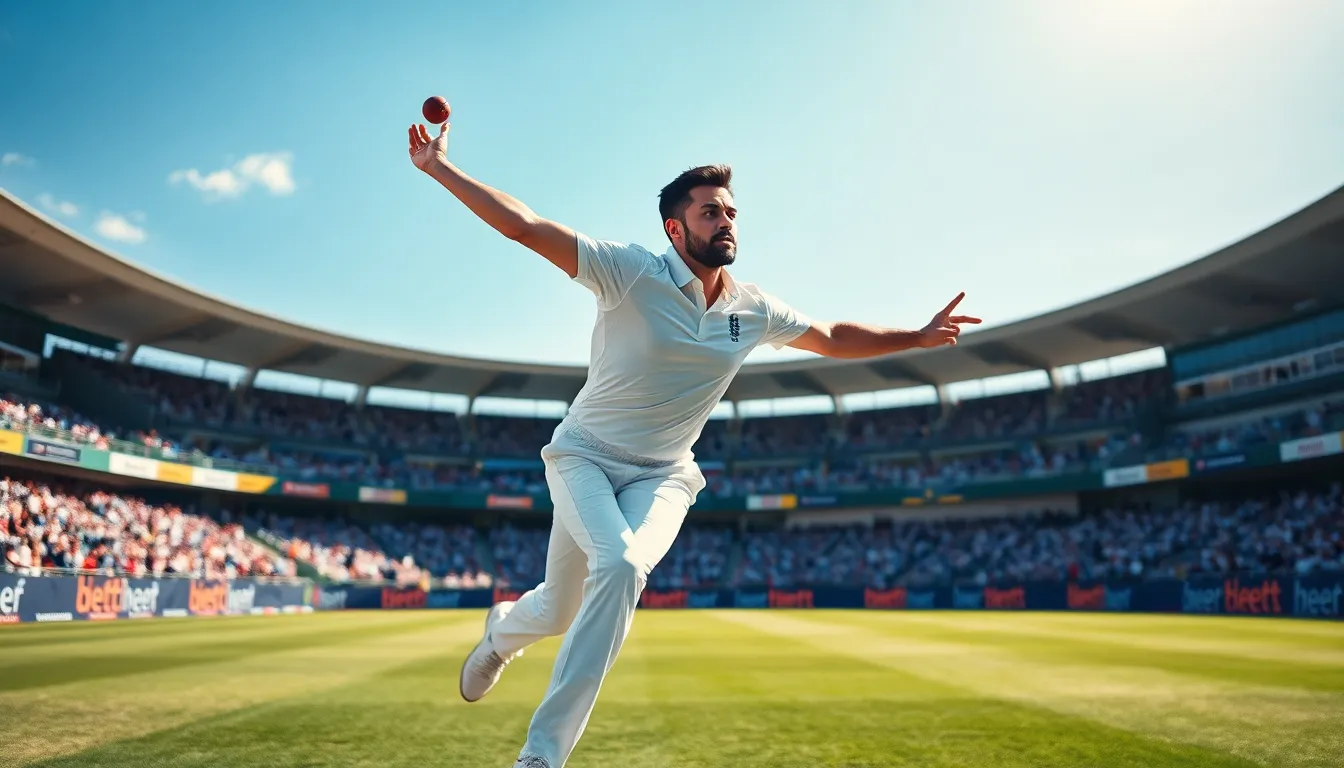If you think bowling is a leisurely affair, think again. Fast bowling is like a high-speed chase, where split-second decisions can change the course of a game. Imagine a 90 mph missile hurtling toward you, and you’ll get a glimpse of the thrill. In the world of cricket, the title of the world fastest bowler isn’t just a feather in the cap: it’s a testament to raw power, technique, and sheer determination. Grab your seat as we explore the realm of these speed demons.
Table of Contents
ToggleIntroduction to Fast Bowling

Fast bowling is more than just throwing the ball quickly: it’s a blend of athleticism, precision, and a dash of drama. Fast bowlers are often the crowd favorites, inducing gasps as they deliver lightning-fast bouncers and toe-crushing yorkers. In cricket, speed is synonymous with aggression, creating an exhilarating atmosphere on the pitch. But how do these athletes achieve such incredible speeds? The secret lies in their technique and training regimens that focus on optimizing everything from physique to mindset.
Notable Fast Bowlers in History
Throughout cricket’s storied history, many bowlers have left their mark with awe-inspiring deliveries. One cannot mention fast bowling without paying homage to the likes of Shane Warne and Wasim Akram. Warne, though predominantly a spinner, occasionally dazzled the crowd with his unexpected pace. On the other hand, Akram, known as the “Sultan of Swing,” combined speed with an intricate understanding of swing bowling, often clocking in at a formidable pace. But let’s not forget Brett Lee, whose blend of speed and style made him a household name, and Tommy McRaw, with his blistering deliveries that often left batsmen literally shaking in their boots. Each of these bowlers not only boasted speed but also a unique flair that kept fans entertained.
Modern-Day Speed Kings
Fast bowling has evolved, and today’s players are pushing the limits even further. The current titleholder for the fastest recorded delivery is Shaheen Afridi, who ripped a delivery at a staggering 161.3 km/h. Yet, he’s not alone in the race. Bowlers like Jasprit Bumrah and Mitchell Starc have refined their techniques to achieve remarkable speeds while maintaining accuracy. Bumrah’s unorthodox bowling action and Starc’s fluid run-up and action create a cocktail of speed that is difficult to face. Also, the emergence of bowlers from countries like South Africa and West Indies adds to the excitement, showing that fast bowling will continue to evolve.
The Science Behind Fast Bowling
What makes a fast bowler fast? It’s not just about muscle: it’s about physics, biomechanics, and training. To reach incredible speeds, bowlers leverage their entire body. From sprinting to strength training, every part of their regimen contributes to their performance. The rotational force generated through the lower body drives the arm and ball forward, creating tremendous velocity. Also, timing, grip, and technique all play crucial roles. With advancements in sports science, bowlers today have access to data analytics that help them understand their bowling techniques, allowing for adjustments and improvements in speed.
Records and Achievements
Fast bowling records are a source of pride and a benchmark for aspiring cricketers. Over the years, records have been set, broken, and redefined. The record for the fastest ball ever bowled, 124.4 mph or 200.6 km/h, was famously set by Shahid Afridi during a match in 2013. This record remains the gold standard in the cricketing world. The highest wicket-taker title for fast bowlers is fiercely contested, with legends like Glenn McGrath leading the way. When it comes to accolades, high-speed bowlers are often the first choice in squads, highlighting how integral speed is to modern cricket.


